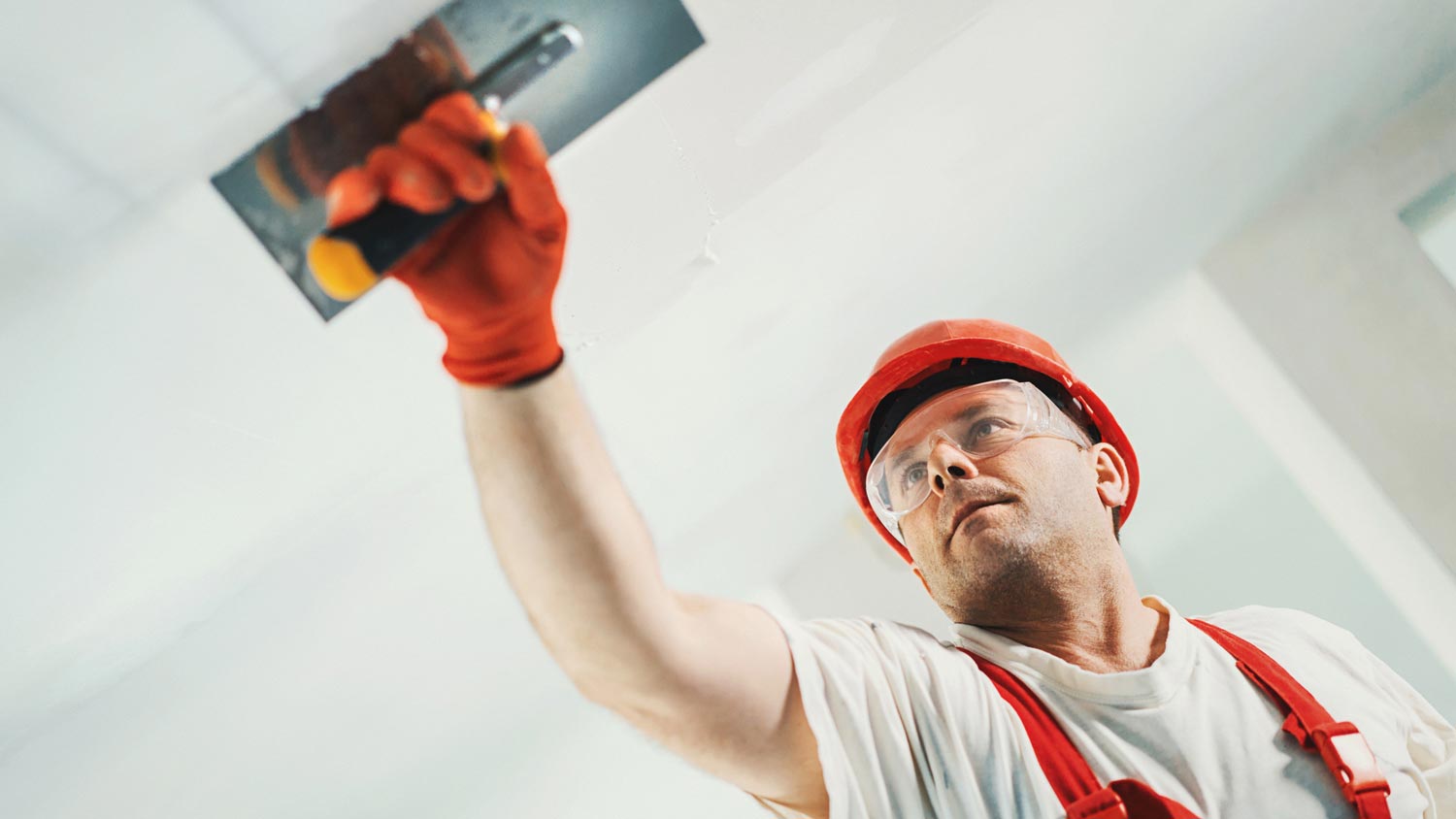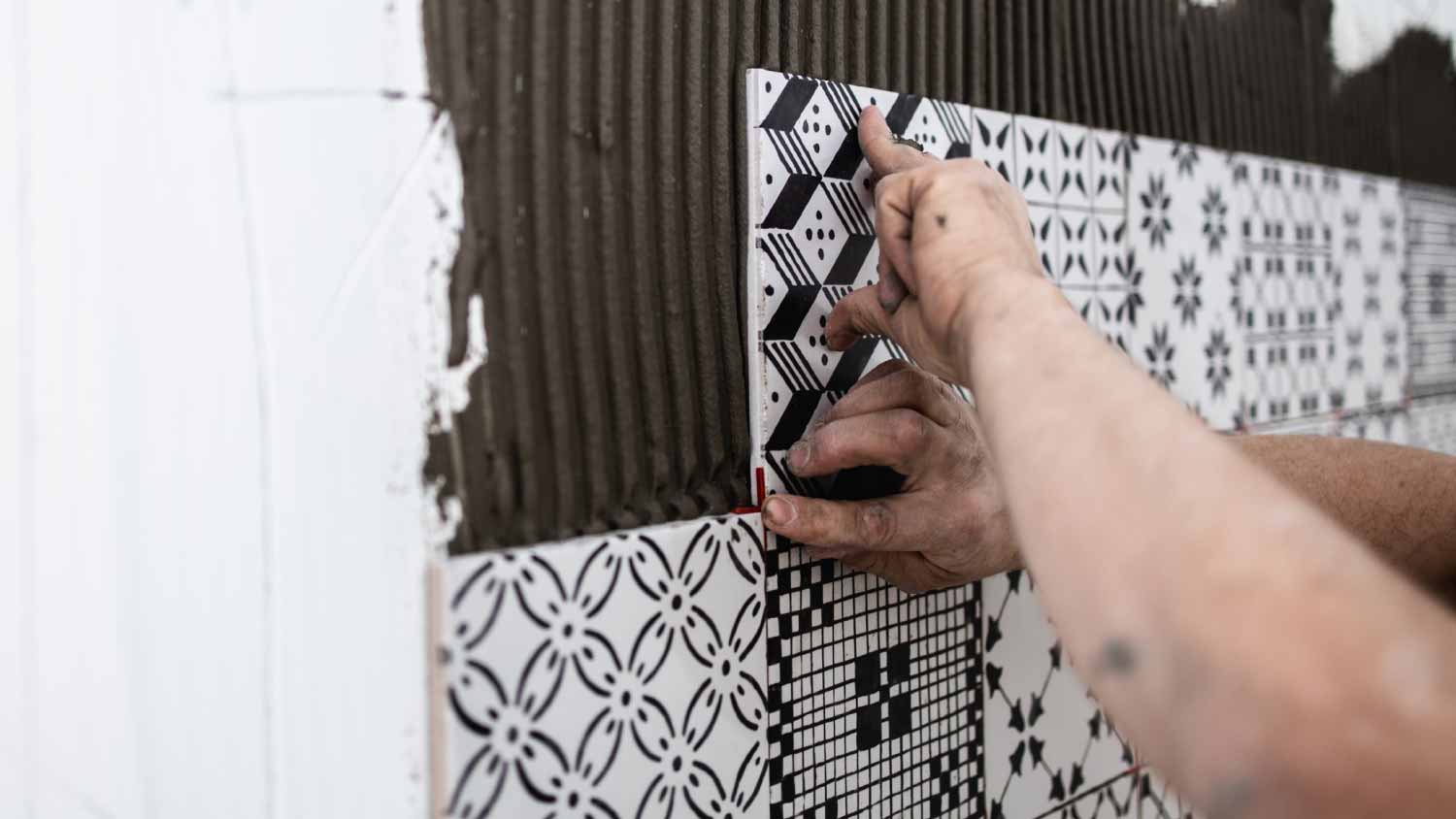
Skim coating drywall is a great alternative to replacement, and is often more affordable. Use this guide to estimate the cost to skim coat walls in your home.
Don’t cut corners in home improvement projects


Drywall doesn’t attach well to tile, and there’s an issue of moisture if you do try it.
Other ways to update tile include skim coating, painting, and applying beadboard.
Decals and paint stencils are DIY-friendly ways of updating tile.
Removing tile from a wall can easily turn into a messy, time-consuming project. Can you drywall over the tile and just be done with it? You could, but should you? That’s the more important question, and in this case, the answer is no. But before you take out your frustrations with a sledgehammer on that tile, keep scrolling to learn more about why this is indeed the best way to go.
Cutting corners on any project is rarely a good idea in home improvement, as it more often leads to bigger (and more expensive) problems down the road. But if you’re still wondering whether it’s possible to get away with drywalling over tile, consider these issues that will likely crop up:
Problems with adhesion: Unlike a laminate floor which can “float” over an existing floor, drywall must adhere to the wall. It’s hard to do that with drywall and smooth tile, so there’s a risk of the wall detaching.
Potential for moisture: If moisture gets stuck between the tile and drywall—which can easily happen in a high-moisture area like a bathroom or kitchen—it can lead to mold growth and structural damage. It might be possible to install a moisture barrier, but again, the problem is connecting it to the tile.
Uneven finish: Grout lines and tile irregularities can’t hide even when covered in drywall, and the uneven finish will be noticeable.

Now that you know why it’s not a good strategy to install drywall over tile, it’s time to consider how to refresh those tiles without having to remove them.
Install tile over tile: Assuming the existing tile was installed properly and is still in decent condition, you can install new tile right on the old tile.
Apply a skim coat: If your tile needs a facelift, you might consider skim coating it. A skim coat is a thin layer of drywall joint compound, affectionately known as “mud,” that goes right over the tiles to smooth out the surface, making them look new(er).
Paint the tiles: Paint won’t adhere to a shiny surface, so after sanding down the tiles a bit and applying primer or a skim coat, you could paint over the tiles. If you don’t want to change the entire color of the tile, just give it an accent with a stencil. You’ll still need to sand and prep the tiles, but spray paint makes it easier to create stenciled designs on the tile.
Install beadboard: Beadboard panels adhere well to tile, provided the tile is in good condition and the adhesive is strong.
Tile decals: This rental-friendly accent is easy to apply and remove, so it’s a good option for DIYers on a budget.
These are the most effective alternatives to refreshing a tile wall without demolishing it. However, if your tile isn’t in good condition and removing it is the only option, then you might once again consider drywall. Don’t feel like doing the demolition yourself? Hire an experienced local drywall installer to do the entire job for you.
From average costs to expert advice, get all the answers you need to get your job done.

Skim coating drywall is a great alternative to replacement, and is often more affordable. Use this guide to estimate the cost to skim coat walls in your home.

Drywall texture can create an attractive finish and add dimension to your home’s walls. This guide breaks down the factors that influence the cost to texture drywall.

Whether you’re trying to keep noise in or out, soundproofing materials are the way to go. Use this guide to see how much it costs to soundproof a room.

Drop ceilings are secondary ceilings of grids or suspended drywall. Learn more about how this ceiling type is used in residential and commercial buildings.

How long does drywall mud take to dry? In most cases, you need to wait at least 24 hours before moving to the next step of your project. Read on to learn more.

Can you put drywall over drywall to cover old, damaged or cracked plaster walls? Read our guide to determine if this is the right solution for your walls.